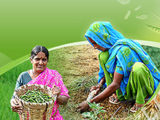Detachable plant parts capable of being disseminated for propagating, commonly a seed or fruit, hereafter referred to as seeds, are the primary method for plant propagation and, consequently, the agent for the long-distance spreading of invasive plants and weeds. International marketing of seeds, grains, or other agricultural goods, which may be contaminated with unwanted seeds, present a considerable quarantine risk. In this context, seed identification to determine the family, genus, and species of intercepted seeds is especially important for identifying species that have quarantine significance across regions and borders.
Two approaches can be used to reduce the risk of weed spread via international trade. For over a hundred years, seed companies have used screening practices that allow them to certify that the crop seeds they market have been inspected and are not contaminated with weed seeds. The second approach is to inspect agricultural and other commodities to determine if they contain weed seeds, in which case, the species involved need to be identified to determine the level of quarantine risk.
The process of seed identification, based on seed morphological analysis, faces considerable challenges. Apart from the global decline in taxonomic expertise, specimen references and supporting resources for identifying species from other countries and regions are often limited. To address this issue, the International Seed Morphology Association (ISMA) organized an international collaborative project in 2017 to establish a digital platform with three key components: virtual publication of a Seed Identification Guide, an online learning portal, and a peer-support forum. AI would be a suitable application for a peer support portal in the next stage of the DIT development.
ISMA has also implemented strategies to facilitate international collaboration in developing data, images, and information matrixes for seed identification. The aim is to ensure compatibility between authors who may have various language profiles, technical knowledge, and professional background.
The Seed Identification Guide: This digital, publication contains peer-reviewed, seed identification factsheets, an image gallery, Lucid matrix identification keys, and a glossary of botanical terms. Each factsheet of a plant species has a description of the morphological features and images of dispersal units, a morphological comparison with similar species, plant species distribution, and other biological features. The number of species, keys, and image gallery will be expanded or enriched routinely as more publications are received from authors around the world, with no limitation of volumes or editions.
Online Learning Portal: This portal provides online training tools and resources to support seed identification. For example, analysts or inspectors can use seed identification quizzes to learn about the seed morphological features of different species or families. Recorded webinars and posters provide further information about seed identification across various species.
Seed ID Forum: This forum provides a web-based virtual space where registered users can discuss or seek advice from their peers concerning botanical knowledge, seed identification, plant taxonomy, and nomenclatures. ISMA has also implemented strategies to facilitate international collaboration in developing data, images, and information matrixes for seed identification. The aim is to ensure compatibility between authors who may have various language profiles, technical knowledge, and professional background.
In addition to the resources listed above, ISMA has also established a Publication Guide, providing clear standards and guidelines for seed identification tool development to allow easy integration of products created by different groups.
Standardising data collection methods.
ISMA has developed a protocol for seed images and the size measurement for each seed description. ISMA also provides a standard template for authors to ensure completeness and compatibility, see illustration below.
Example of seed image protocol for authors to facilitate the completeness of seed morphological information of each species:

Standardising feature descriptions.
ISMA has published standardised charts to increase the consistency of the morphological feature descriptions and their interpretation. Authors can use these charts to assist their writing, and the end-users can use them for their reference. There are charts for qualitative features (e.g., shape and colour description) and semi-quantitative features (e.g., surface texture description), as shown in the following diagram which includes examples of semi-quantitative features for raised or depressed decorations on seed or fruit surface.

Assistance for feature description and usage with multimedia.

Multimedia assistance is recommended in feature descriptions, such as images and drawings for fact sheets, glossaries, and identification key state descriptions. Photos and illustrations with proper labels can help add precision. and clarity to the feature description, as indicated here.
*Notes: Credits to Key to propagules of selected weedy Asteraceae (daisy or sunflower family), Alexander Schmidt, Department of Agriculture and Water Resources, the Government of Australia.
